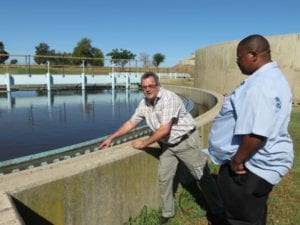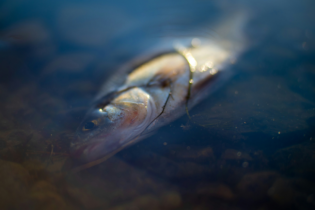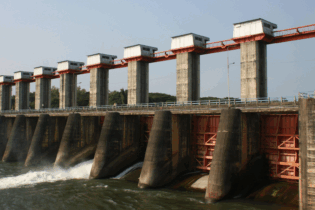The Oudtshoorn municipality is disputing allegations that its waste water treatment plant is being mismanaged.
Acting municipal manager, Ronnie Lottering and a team of senior officials visited the waste water treatment plant recently. “The sewerage plant is fully functional and neat. The message that the plant is being mismanaged is inappropriate,” said Lottering after a walkabout on the premises and a briefing he received from the managers and operators at the plant. He added: “Every facet of a complete sewerage plant does exist and the personnel employed are fully competent of their duties.”A bloody discovery
However, it soon became clear why the plant’s treatment process was compromised as the presence of vast volumes of blood, fat and the distinctive colour of floating petroleum products were clearly present at the inlet of the works. The Director: Technical Services explained that the “effective removal of organic matter (an important aim of a waste water treatment works) can only be obtained with the aid of suitable bacteria under controlled conditions.”The large amounts of the above-mentioned products, together with other toxic chemicals which are illegally dumped into the sewers, are the main contributors to the production of a partially treated effluent which eventually ends up in the Olifants River.
The municipality says it has a challenge to employ a sufficient number of human resources to ensure that the general public, restaurants, butcheries, abattoirs, etc, abide by the relevant by-laws pertaining to the installation and maintenance of appropriate fat/grease traps as well as other unauthorised and illegal discharges into municipal sewers. The municipality adds that it is currently in the process of bolstering this unit to enable adequate policing and enforcement of the by-laws while also ensuring that the community of the Greater Oudtshoorn receives the necessary education pertaining to the discharge of illegal substances into the municipal sewer network.







